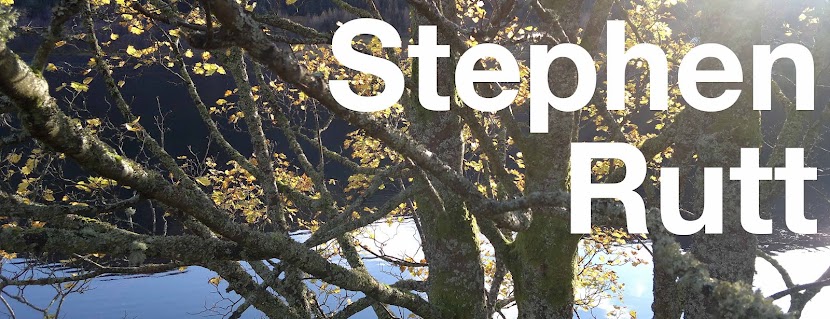In a blizzard the train pulls up outside Motherwell station.
Beyond the embankment a steel security fence stands in front of the dark
factories that dominate the skyline of the Glasgow suburbs. Birch trees as
silver as the snow are growing here in a siding that’s stood untouched for a
year or two now, I would guess. Standing between the rails and growing out of
the rubble between the lines, I salute them. Nature hates a metaphor but human
nature can’t resist them. I want to apply it to myself. Things have a habit of
growing where you don’t expect them. Where nature finds an edge, a crack, it
will seep in. Even if it’s just the setting sun over the distant mountains you
see from the rails of life.
 |
| Galloway, from a train window |
What is the purpose of March? Late winter is a stable time;
spring, frenetic. March? Unsettled. In limbo between the two. Restless wildfowl
are caught between leaving and arriving, the Whooper Swans make a racket,
become flighty and fight amongst themselves; the Teal test their wings and fly
laps of the marsh. Twenty one years ago I arrived as well; restless and noisy.
The opportunity for birding was too good to pass up.
This is the corner of Scotland. It exists for about a mile
of the firth in front of me. The other shore, the other wind farms, the other
distant snowy peaks are England’s extremities. The border is arbitrary. There’s
no particular reason why it should be this river instead of any other, but it
is, and is reflected in the words. It’s a firth, after all, not an estuary.
Caerlaverock not Castlelark. Merse not marsh. Barnacle Geese come here not
because it’s the warmest corner of Scotland, but because the coast of Dumfries
is flat and fertile. A liminal land on the edge of the Galloway mountains, the
Irish Sea, extensive mud and the gently rolling waves of grassy fields.
There’s apparently a twelfth century castle here but it will
be here a while longer. I couldn’t be sure of the same for the Green-winged
Teal. The day before it had been posing on a pond for photographers like a tame
Mallard. Today it had disappeared somewhere along the Solway. It might be an American
duck but it’s not an exciting one. Take your standard teal and flip the white
stripe along its side by ninety degrees and suddenly it becomes much more
exciting, allegedly. It’s crossed the Atlantic but it’s not a species you can
have much of an emotional connection with. It doesn’t do charisma,
particularly. A normal teal is just as good, just lacking a line and a label
and not something to tell your friends about. I try both anyway and succeed at
neither.
 |
| Not a Green-winged Teal. |
 |
| Still not a Green-winged Teal |
 |
| Definitely not a Green-winged Teal |
Maybe I just wasn’t bloody minded enough to find it. Too easily
distracted. A friend texted me, asking what I was doing. Spiritual communion
with Yellowhammers was my response. I let dad find a hide while I hung back
between the hedgerows that reached over and created a sort of tunnel. Walking
along with the flitting of the flock. Yellowhammers, luminous, in the weak
winter light, freshly plumaged Reed Buntings easily lost in the tangled twigs.
Hyperactive technicolour tits. Technicolour? Sounds like an absurd word to use,
one that is almost completely, unnaturally wrong. No techni about it, just
seasonal, hormonal vigour. Yet it was the first that leapt to my mind…
Mutual surprise.



















